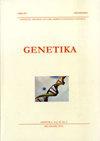TEMPERATURE AND PH OPTIMIZATION OF CAR THERMOPHILIC BACTERIA FOR THE PRODUCTION OF XILANASE THE BLEACHING OF ENVIRONMENTALLY FRIENDLY INKED PAPER WASTE
4区 农林科学
Q3 Agricultural and Biological Sciences
引用次数: 0
Abstract
Xylanase is an extracellular enzyme capable of hydrolyzing hemicellulose so that it can convert xylan into xylose. Xylanase enzymes can be used in the pulp and paper industry. This study aims to determine the effect of temperature, pH on enzyme production by immobilized thermophilic bacteria using rice straw xylan extract as a substrate and to see the effect of xylanase administration on the whiteness level of inked paper waste. This study was an experimental study and used a completely randomized design (CRD). Enzyme activity was measured using a spectrophotometer at a wavelength of 540 nm. Enzyme activity data were analyzed using the ANOVA test and continued with the DMRT (Duncan Multiple Range Test) further test with a level of 5% and the whiteness of the paper was determined by testing the kappa number. The results obtained were that the temperature of immobilize thermophilic bacteria using rice straw xylan extract as a substrate affected the xylanase enzyme activity with an optimum temperature of 75°C having the highest average value of enzyme activity 4.668 U/mL. Meanwhile, the optimum pH for immobilized thermophilic bacteria to produce xylanase was pH 8.5 with the highest average value of enzyme activity 4.854 U/mL. The addition of xylanase enzyme in the fermentation process of inked paper waste was able to increase the brightness of the inked paper with a lower average value of kappa number of 2.762 compared to the higher control of 5.525.车用嗜热菌生产西拉那酶的温度和PH优化环保油墨废纸的漂白
木聚糖酶是一种细胞外酶,能够水解半纤维素,将木聚糖转化为木糖。木聚糖酶可用于纸浆和造纸工业。本研究旨在确定温度、pH值对固定化嗜热菌以稻草木聚糖提取物为底物产酶的影响,并观察木聚糖酶的添加对油墨废纸白度的影响。本研究为实验研究,采用完全随机设计(CRD)。用分光光度计在540nm波长处测定酶活性。酶活性数据使用ANOVA检验进行分析,并继续进行DMRT (Duncan Multiple Range test)进一步检验,水平为5%,并通过测试kappa数来确定纸张的白度。结果表明,以稻草木聚糖提取物为底物的固定化嗜热细菌的温度对木聚糖酶活性有影响,最适温度为75℃,酶活性最高平均值为4.668 U/mL。同时,固定化嗜热菌产木聚糖酶的最适pH为8.5,酶活最高平均值为4.854 U/mL。在废墨纸发酵过程中添加木聚糖酶可以提高墨纸的亮度,其kappa值平均值较低,为2.762,高于对照为5.525。
本文章由计算机程序翻译,如有差异,请以英文原文为准。
求助全文
约1分钟内获得全文
求助全文
来源期刊

Genetika-Belgrade
AGRONOMY-GENETICS & HEREDITY
CiteScore
1.80
自引率
0.00%
发文量
1
审稿时长
6-12 weeks
期刊介绍:
The GENETIKA is dedicated to genetic studies of all organisms including genetics of microorganisms, plant genetics, animal genetics, human genetics, molecular genetics, genomics, functional genomics, plant and animal breeding, population and evolutionary genetics, mutagenesis and genotoxicology and biotechnology.
 求助内容:
求助内容: 应助结果提醒方式:
应助结果提醒方式:


